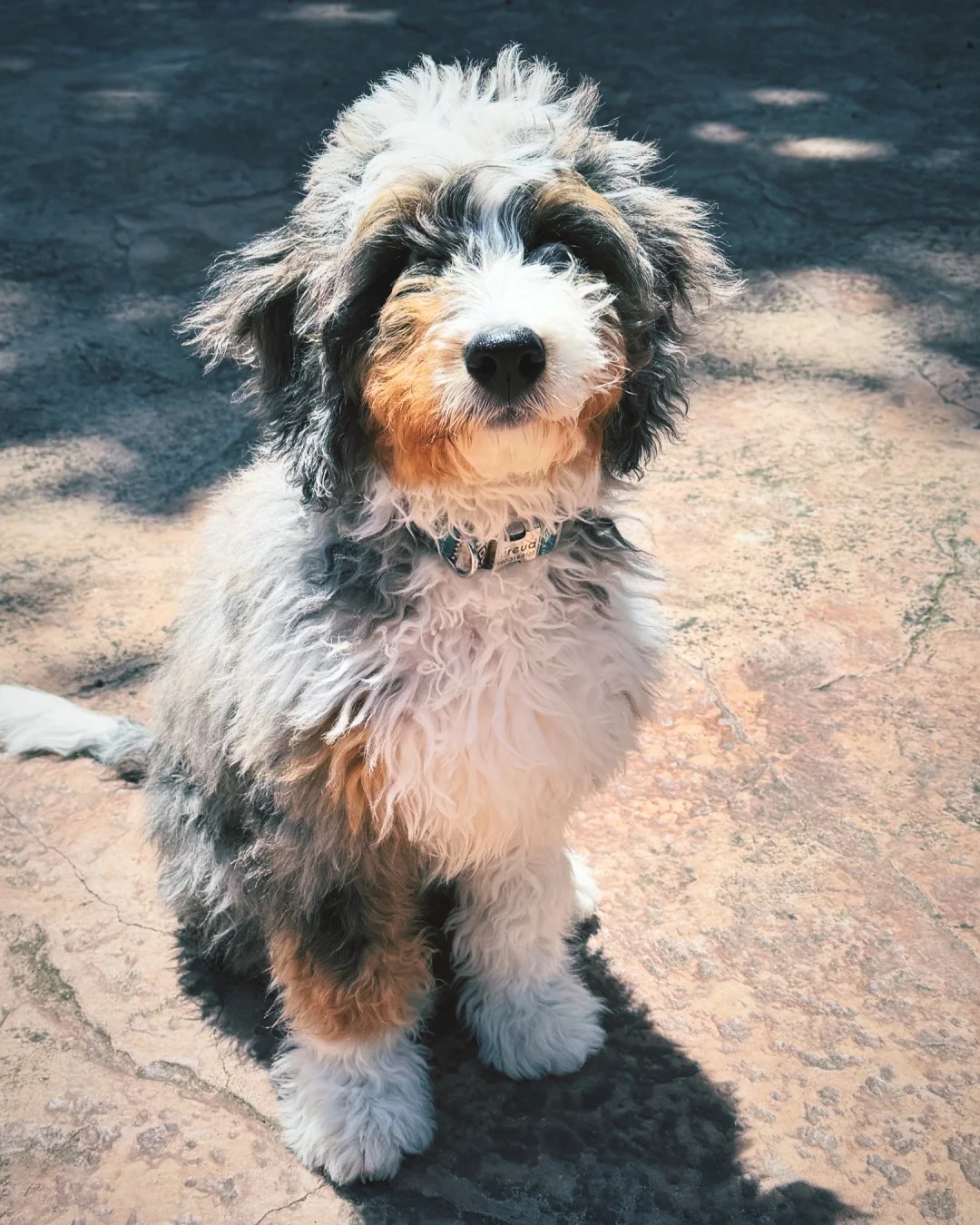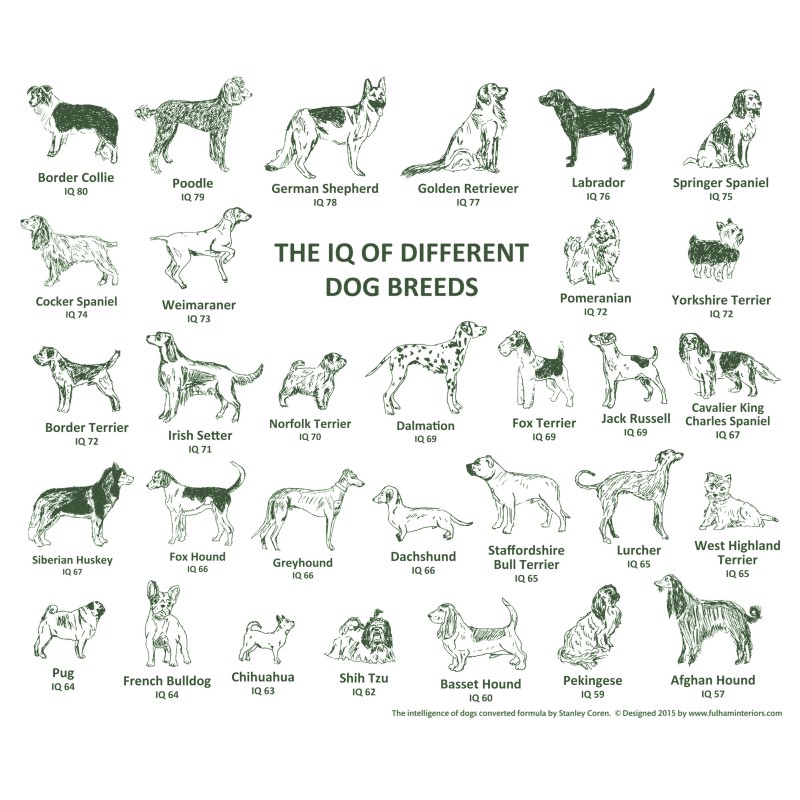The Bernedoodle is a charming hybrid breed resulting from the cross between a Bernese Mountain Dog and a Poodle. This delightful combination brings together the best traits of both parent breeds, creating a dog that is not only adorable but also highly adaptable and family-friendly. In this comprehensive guide, we'll delve into the history of the Bernedoodle, its characteristics, the advantages and disadvantages of owning one, and essential care and health considerations. 🐶
## History of the Bernedoodle
The Bernedoodle is a relatively recent addition to the world of designer dogs. The intentional breeding of Bernese Mountain Dogs and Poodles began in the early 2000s, with the goal of combining the best attributes of both breeds. Bernese Mountain Dogs are known for their calm, loyal nature and striking tri-colored coats, while Poodles are celebrated for their intelligence, hypoallergenic coats, and playful personalities. The hybrid aims to bring together these traits, resulting in a versatile, affectionate, and low-shedding companion. 🌟
## Characteristics of the Bernedoodle
### Physical Appearance
Bernedoodles can vary significantly in appearance due to the genetic diversity inherited from their parent breeds. They generally have a wavy or curly coat that can be black, black-and-white, black-and-brown, or tri-colored (black, white, and brown). Their build can range from the sturdy physique of the Bernese Mountain Dog to the more slender frame of the Poodle. Regardless of their specific appearance, Bernedoodles often resemble fluffy teddy bears, which adds to their appeal. 🧸
### Temperament and Personality
One of the most endearing qualities of the Bernedoodle is its temperament. These dogs tend to inherit the best traits from both parents. They are typically friendly, social, and highly affectionate. Bernedoodles are known for their playful and goofy nature, much like Poodles, and their loyal, gentle demeanor, akin to Bernese Mountain Dogs. They are great with children and the elderly, making them excellent family pets and therapy dogs.
### Intelligence and Trainability
Thanks to the Poodle's influence, Bernedoodles are highly intelligent and easy to train. They respond well to positive reinforcement techniques and enjoy learning new commands and tricks. However, they can also inherit the Bernese Mountain Dog's stubborn streak, so patience and consistency are key when training them. Early socialization and obedience training are essential to ensure a well-rounded and well-behaved adult dog. 🎓
### Activity Level
Bernedoodles generally have a moderate activity level. They enjoy playtime, walks, hikes, and various forms of exercise, but they are also content to relax and snuggle with their owners. Their energy levels can vary depending on their size and the specific traits they inherit from their parents. Mini and Tiny Bernedoodles tend to be more energetic than Standard Bernedoodles, reflecting the differences in their Poodle parentage. 🐾
## Advantages and Disadvantages of Owning a Bernedoodle
### Advantages
1. **Affectionate and Loyal**: Bernedoodles are known for their deep bond with their families. They are affectionate, loving, and thrive on human interaction.
2. **Low-Shedding Coat**: Most Bernedoodles have coats that shed minimally, making them a good choice for people with allergies. However, it's important to note that no dog is truly hypoallergenic.
3. **Versatile Size Options**: Bernedoodles come in three sizes—Standard, Miniature, and Tiny—allowing potential owners to choose a size that fits their living situation and lifestyle.
4. **Good with Children and Other Pets**: Their gentle and friendly nature makes Bernedoodles great companions for children and other pets.
### Disadvantages
1. **Grooming Requirements**: Bernedoodles require regular grooming to maintain their coat and prevent matting. Curly-coated Bernedoodles, in particular, need frequent brushing and periodic clipping.
2. **Potential for Health Issues**: While Bernedoodles benefit from hybrid vigor, they can still inherit health issues from their parent breeds, such as hip dysplasia and certain eye conditions.
3. **Training Challenges**: Some Bernedoodles may inherit the Bernese Mountain Dog's stubbornness, requiring extra patience and consistent training.
4. **High Energy Levels**: Depending on their size and parentage, some Bernedoodles may have higher energy levels that need to be managed through regular exercise and mental stimulation. 🚀
## Daily Care and Health Considerations
### Diet and Nutrition
A balanced diet is crucial for maintaining the health and well-being of a Bernedoodle. High-quality commercial dog food or a well-planned homemade diet can provide the necessary nutrients. It's important to consider the dog's size, age, activity level, and any specific health concerns when determining the appropriate diet. Regular vet check-ups can help ensure that the dog is receiving the right nutrition and maintaining a healthy weight. 🍲
### Exercise and Mental Stimulation
Bernedoodles need regular exercise to keep them physically fit and mentally stimulated. Daily walks, play sessions, and interactive toys can help prevent boredom and behavioral issues. Activities like hiking, swimming, and agility training can also be enjoyable for both the dog and the owner. For Mini and Tiny Bernedoodles, exercise needs may be slightly less demanding, but they still require regular physical activity to stay healthy and happy. 🏃♂️
### Grooming
The grooming needs of a Bernedoodle vary depending on its coat type. Wavy-coated Bernedoodles shed minimally and require regular brushing to prevent tangles and matting. Curly-coated Bernedoodles, similar to Poodles, need more frequent grooming, including brushing several times a week and professional grooming every few months. Regular ear cleaning, nail trimming, and dental care are also essential parts of a Bernedoodle's grooming routine. ✂️
### Health Monitoring
While Bernedoodles tend to be healthier than their purebred parents due to hybrid vigor, they can still be prone to certain health issues. Regular veterinary check-ups are crucial for early detection and management of potential health problems. Some common health concerns for Bernedoodles include:
1. **Hip and Elbow Dysplasia**: Genetic testing and maintaining a healthy weight can help reduce the risk of these joint issues.
2. **Eye Conditions**: Regular eye exams can help detect problems like progressive retinal atrophy (PRA) early on.
3. **Allergies**: Bernedoodles can suffer from food and environmental allergies. Monitoring for signs of itching, rashes, or ear infections can help manage these issues.
4. **Gastric Dilatation-Volvulus (GDV)**: Also known as bloat, this condition is more common in large, deep-chested dogs like Standard Bernedoodles. Feeding smaller, more frequent meals and avoiding vigorous exercise after eating can help prevent GDV. 🐕
## Conclusion
The Bernedoodle is a delightful and versatile breed that combines the best traits of the Bernese Mountain Dog and the Poodle. With their affectionate nature, intelligence, and low-shedding coat, they make excellent companions for families, singles, and seniors alike. However, potential owners should be prepared for the grooming requirements, training challenges, and health monitoring that come with this hybrid breed. By providing proper care, exercise, and attention, a Bernedoodle can become a cherished member of the family for many years. 🏡❤️





